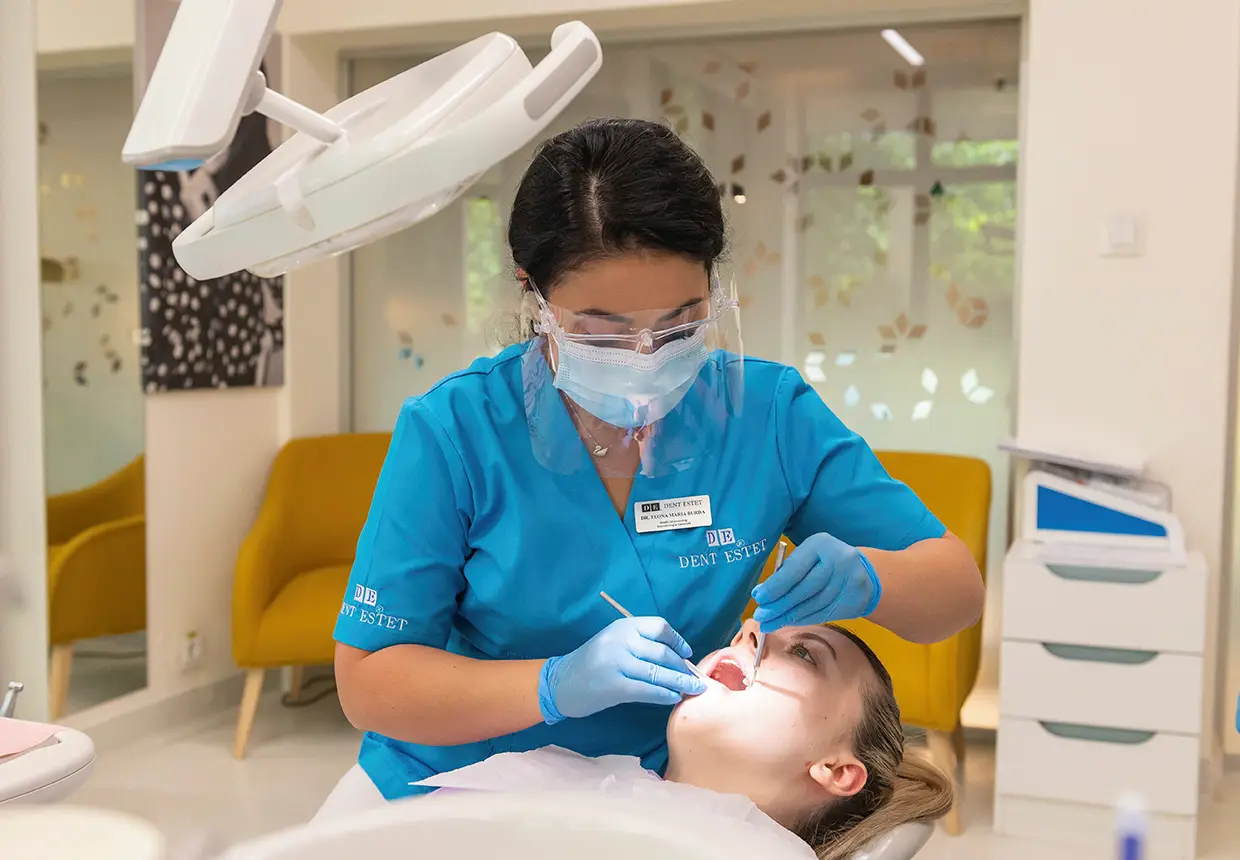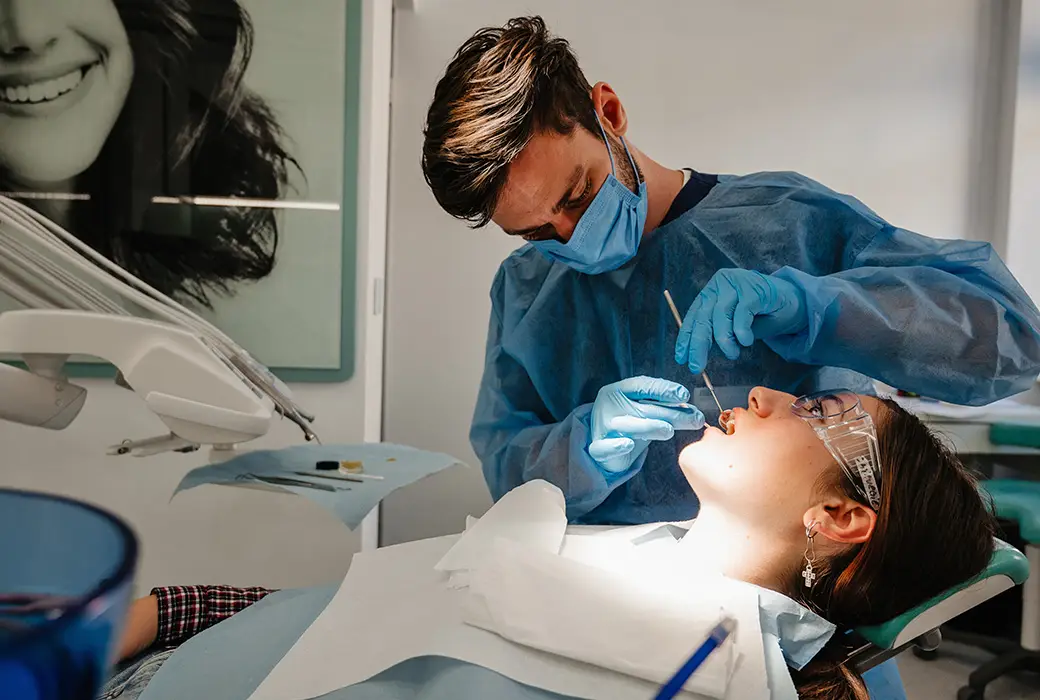
Oral candidiasis
Causes, symptoms, treatment
Oral candidiasis, also known as oral or oropharyngeal thrush, is a fungal infection that affects the mouth, tongue, and esophagus. Candida is normally present in the human body but does not always cause infections. These occur when the fungi grow uncontrollably. Oral thrush is more common among infants and the elderly but can develop at any age. It is usually treated and cured without difficulties. Here is everything you need to know about oral candidiasis.
What is oral candidiasis and why does it occur?
Most often, oral candidiasis develops when the immune system is weakened. Therefore, it has a higher incidence among infants and the elderly.
What causes oral candidiasis?
Candida is present in the body in the mouth, digestive tract, and on the skin, just like many other bacteria and microorganisms. When other conditions, stress, or certain medications disrupt the bacterial flora and cause imbalances, this fungus can cause oral candidiasis.
Medications that can disrupt the bacterial flora and cause infections include:
- Corticosteroids
- Antibiotics
- Oral contraceptive pills
Risk factors for oral candidiasis
Candida infection is more likely to develop in individuals who:
- Have diabetes
- Smoke
- Have cancer and, therefore, a reduced immunity
- Wear poorly fitting dentures or inappropriate orthodontic appliances
- Have poor oral hygiene
- Suffer from xerostomia (dry mouth)
- Experience significant hormonal fluctuations, often due to pregnancy
- Have a weakened immune system
Given that people with braces or dentures are more prone to contracting a fungus that can lead to oral candidiasis, especially with poor oral hygiene, it is crucial to visit the dentist. The dentist can provide information on maintaining good oral health by following oral hygiene rules and scheduling regular check-ups.
How Is oral candidiasis transmitted?
Anyone can suffer from oral candidiasis, from newborns and infants to adults and the elderly with a weakened immune system, although symptoms in these individuals are more challenging to manage. Additionally, candidiasis in the esophagus is one of the most common infections among individuals diagnosed with HIV.
Although not considered highly contagious, it can be transmitted through saliva. If you come into contact with someone suffering from oral candidiasis, it is advisable to wash your hands frequently and avoid contact with their saliva, as candidiasis can also be transmitted through contaminated objects.
How can you prevent oral candidiasis?
Oral candidiasis is caused by one of over 200 species of Candida, most of which are harmless. The most common species responsible for the infection include Candida albicans, Candida tropicalis, Candida krusei, Candida parapsilosis, and Candida glabrata.
Here’s What You Can Do to Prevent the Infection:
- Establish a proper oral hygiene routine. Brush your teeth at least twice a day and use dental floss to completely remove food particles. If you are undergoing corticosteroid treatment, it is important to brush your teeth or rinse your mouth with water or mouthwash after administration.
- Pay extra attention to denture hygiene if you use one, and consult your dentist if it does not fit your jaw perfectly.
- Control diabetes if you have this condition and limit sugar consumption, as it can stimulate the development of oral candidiasis.
- Limit or quit smoking entirely.
- Visit your dentist regularly, especially if you are undergoing orthodontic treatment.
What are the symptoms of oral candidiasis?
Oral candidiasis manifests suddenly, without symptoms indicating the onset of the infection. A common symptom is a change in saliva and the appearance of lesions on the tongue or the inner side of the cheeks. These lesions are whitish and have a creamy texture. They can also appear on the roof of the mouth, gums, tonsils, or esophagus.
Other symptoms of oral candidiasis include:
- Redness and pain in the mouth or corners of the lips
- Partial loss of taste
- Dry mouth sensation
- Mouth pain and bleeding, which can also be triggered during teeth cleaning. In more severe cases, these lesions can extend to the esophagus, causing pain and difficulty swallowing.
- Fever if the infection spreads to the esophagus.
Oral candidiasis can also spread to other parts of the body, such as the lungs, liver, or skin. This is more common in individuals with very weak immune systems, those suffering from cancer (including oral cancer), HIV infections, or other conditions that destabilize the immune system. In the case of oral cancer, which has a survival rate of only 30%, the occurrence of oral candidiasis symptoms is even more frequent. For an accurate diagnosis of this condition, oral cancer screening procedures are recommended, which can be performed at DENT ESTET using LED Dental technology with the VELscope VX device.
Superficial candidiasis, which manifests on the mucous membranes and skin, can be treated with medication. However, there are invasive species resistant to antifungal medications that can spread to other organs. Therefore, oral candidiasis should be treated at the first signs to prevent its spread.
How does oral candidiasis manifest in newborns and infants?
In infants and newborns, oral candidiasis manifests through the appearance of white patches or lesions inside the mouth, on the lips, and through skin rashes. In infants, candidiasis can be transmitted from the mother if she has a fungal infection on her breasts during breastfeeding. Hence, detecting and treating candidiasis is important for both babies and mothers. Proper hygiene can prevent its spread.
Types of oral candidiasis
Oral candidiasis can come in various types. Based on appearance, it is classified as follows:
- Pseudomembranous Candidiasis - Characterized by the appearance of white patches or a total covering with a whitish substance, which, when removed, reveals erythematous lesions or even bleeding of the mucosa.
- Erythematous Candidiasis - Manifests as open lesions and has several subtypes: denture-associated stomatitis, angular stomatitis, median rhomboid glossitis, and antibiotic-induced stomatitis.
- Hyperplastic or Nodular Candidiasis - Characterized by the appearance of persistent, nodular, whitish lesions.
Another classification differentiates between:
- Chronic Multifocal Oral Candidiasis - Whose manifestations extend over longer periods.
- Chronic Mucocutaneous Candidiasis - Typically appears on a preexisting infectious background with another subspecies of Candida.
Depending on the severity of the manifestations, oral candidiasis can be mild, moderately severe, or persistent (acute).
Complications of oral candidiasis
Oral candidiasis can very rarely lead to complications, and these usually occur in individuals with severely compromised immunity. Therefore, complications of candidiasis only arise on an unstable immune background. If not treated properly, this fungal infection can enter the bloodstream and spread to the heart, brain, eyes, or other parts of the body. This complication is known as invasive or systemic candidiasis. It is also a condition that can lead to septic shock.

Oral candidiasis - diagnosis and treatment
To properly treat oral thrush, it is important that it is correctly and promptly detected and diagnosed.
Diagnosing oral thrush
The doctor can diagnose the infection by examining the oral cavity and symptoms. In certain cases, tissue may be taken for biopsy to confirm the diagnosis. If the doctor suspects esophageal candidiasis, they can take a swab sample from the throat or use endoscopy to confirm the diagnosis. The throat sample will be taken with a sterile cotton swab and then sent for lab testing. During endoscopy, the doctor will use a thin tube with an attached camera, which will be inserted through the mouth to examine the esophagus. Tissue samples can also be taken for further analysis during endoscopy.
Treating oral thrush
Oral thrush is a condition that, if not chronic, can be treated relatively easily in a short amount of time.
Medication for oral thrush
To treat it medically, the dentist may recommend antifungal medications with active ingredients such as fluconazole, clotrimazole, itraconazole (usually recommended if the patient does not respond to the previously mentioned treatments), or amphotericin B (usually recommended for treating severe oral thrush).
Most often, symptoms disappear within a few weeks of starting allopathic treatment, but they may return later. In cases of recurrent oral thrush without known causes, the doctor may recommend evaluating the patient for other conditions that could contribute to the occurrence of thrush.
Natural remedies for oral thrush
In addition to allopathic antifungal treatment, the doctor may recommend some additional measures to combat oral thrush. Proper oral hygiene plays an important role in preventing the development of such infections. Changing the toothbrush after completing allopathic treatment, properly brushing the teeth and avoiding brushing the affected areas, avoiding sprays and mouthwash if not recommended by the doctor are the first steps you can take to treat thrush.
In addition to these, there are several remedies that can help alleviate symptoms. These are usually used for an extra rinse after completing the oral hygiene routine:
- Saltwater;
- A solution based on water and baking soda;
- A solution based on water and fresh lemon juice;
- A solution based on water and apple cider vinegar.
Such solutions help balance the oral bacterial flora. Along with these, consuming yogurt, pickles, or other foods containing natural probiotics or taking a probiotic dietary supplement can support recovery after oral thrush.
It is important to discuss with the dentist before following any kind of treatment.
Oral thrush has specific symptoms that can usually be detected from the first signs. Depending on the resistance of the infection, a short-term treatment or a long-term one may be necessary, administered in the case of chronic or repeated infections. The dentist will guide you towards the best treatment options, depending on the symptoms and your body's response to antifungals.
Resources:
- https://www.mayoclinic.org/diseases-conditions/oral-thrush/symptoms-causes/syc-20353533
- https://www.healthline.com/health/thrush
- https://dermnetnz.org/topics/oral-candidiasis
- https://www.medicalnewstoday.com/articles/178864
- https://www.nhs.uk/conditions/oral-thrush-mouth-thrush/
- https://pharmaceutical-journal.com/article/ld/oral-candidiasis-causes-types-and-treatment
- https://www.ncbi.nlm.nih.gov/books/NBK545282/


